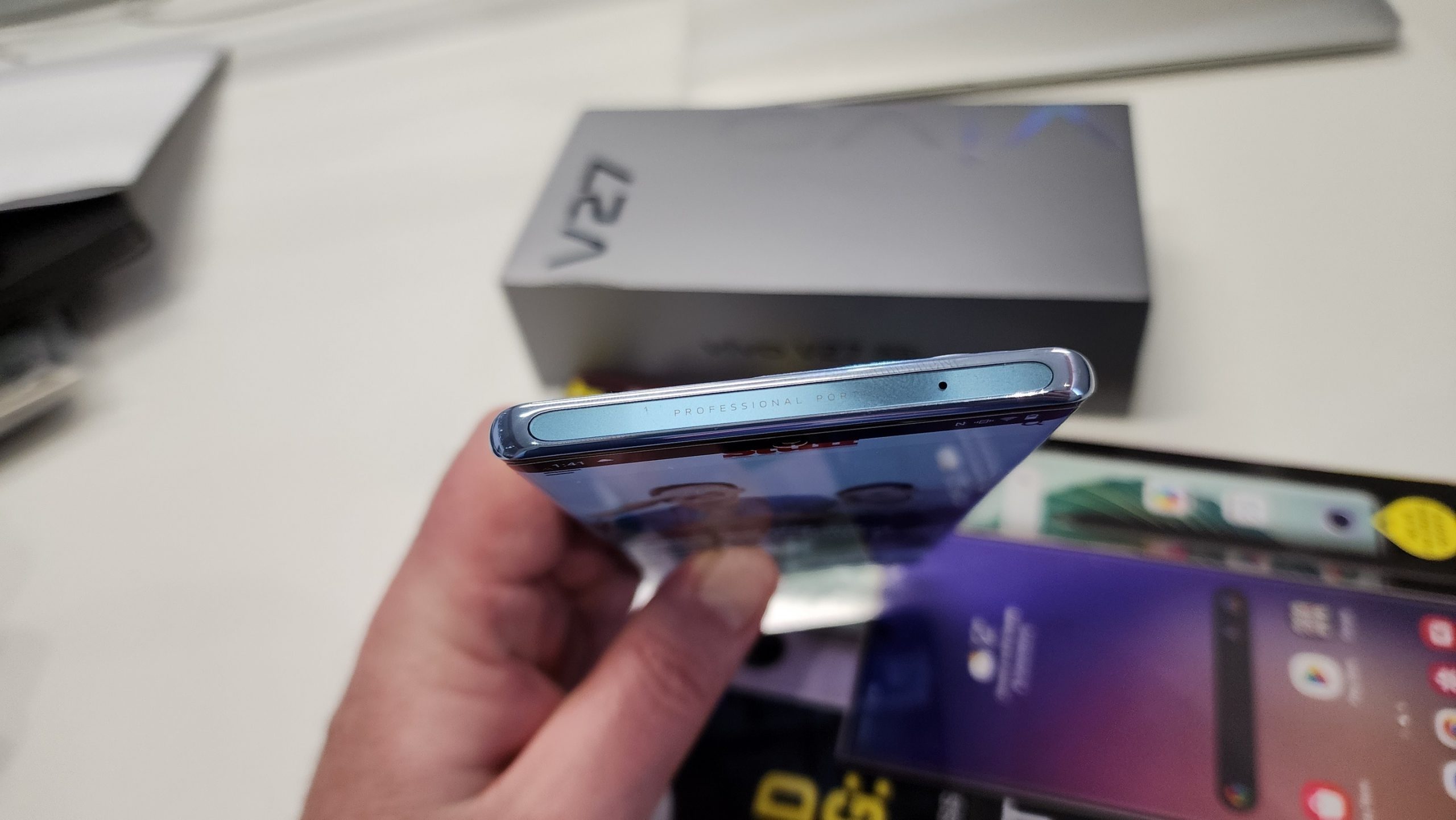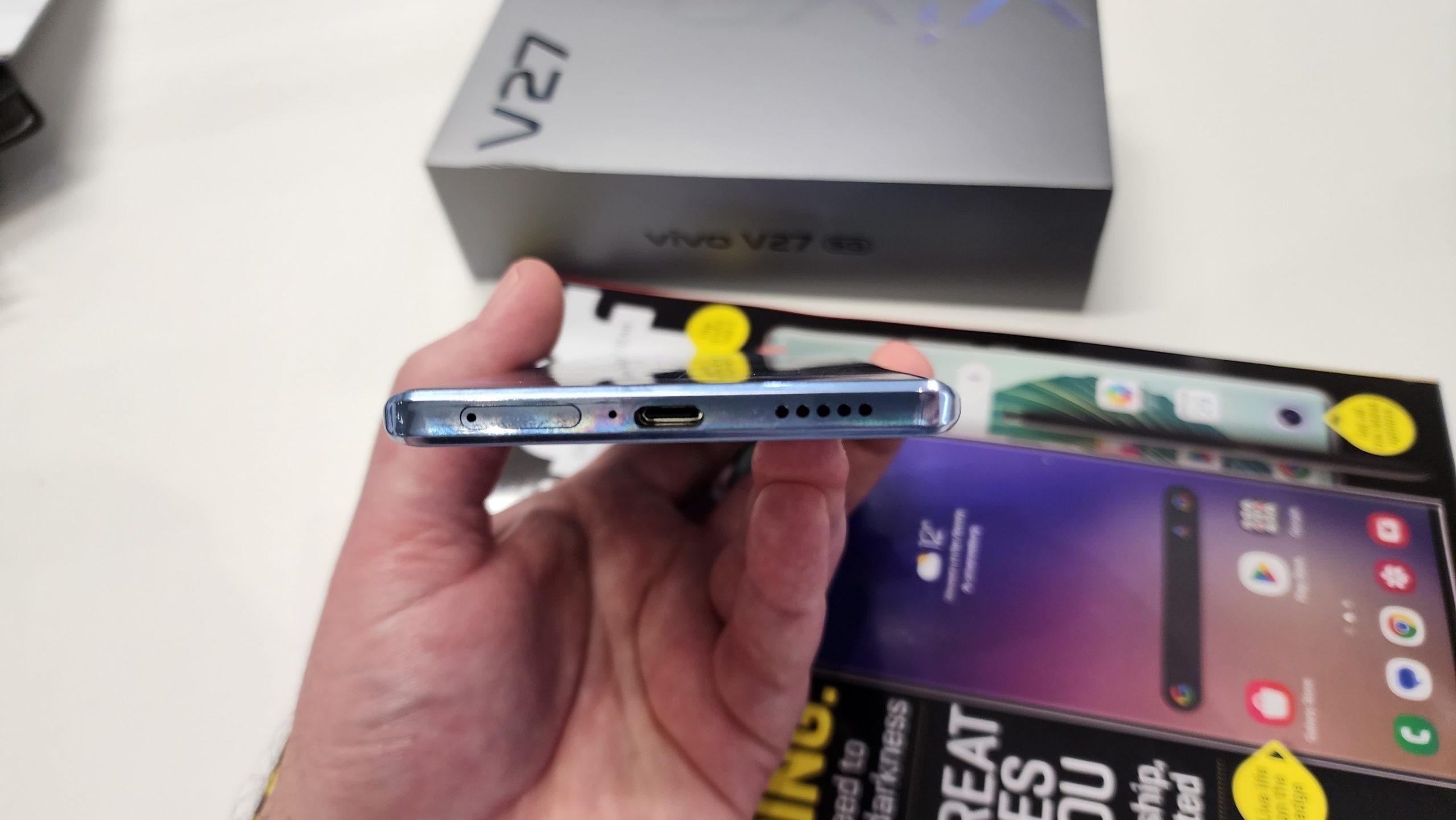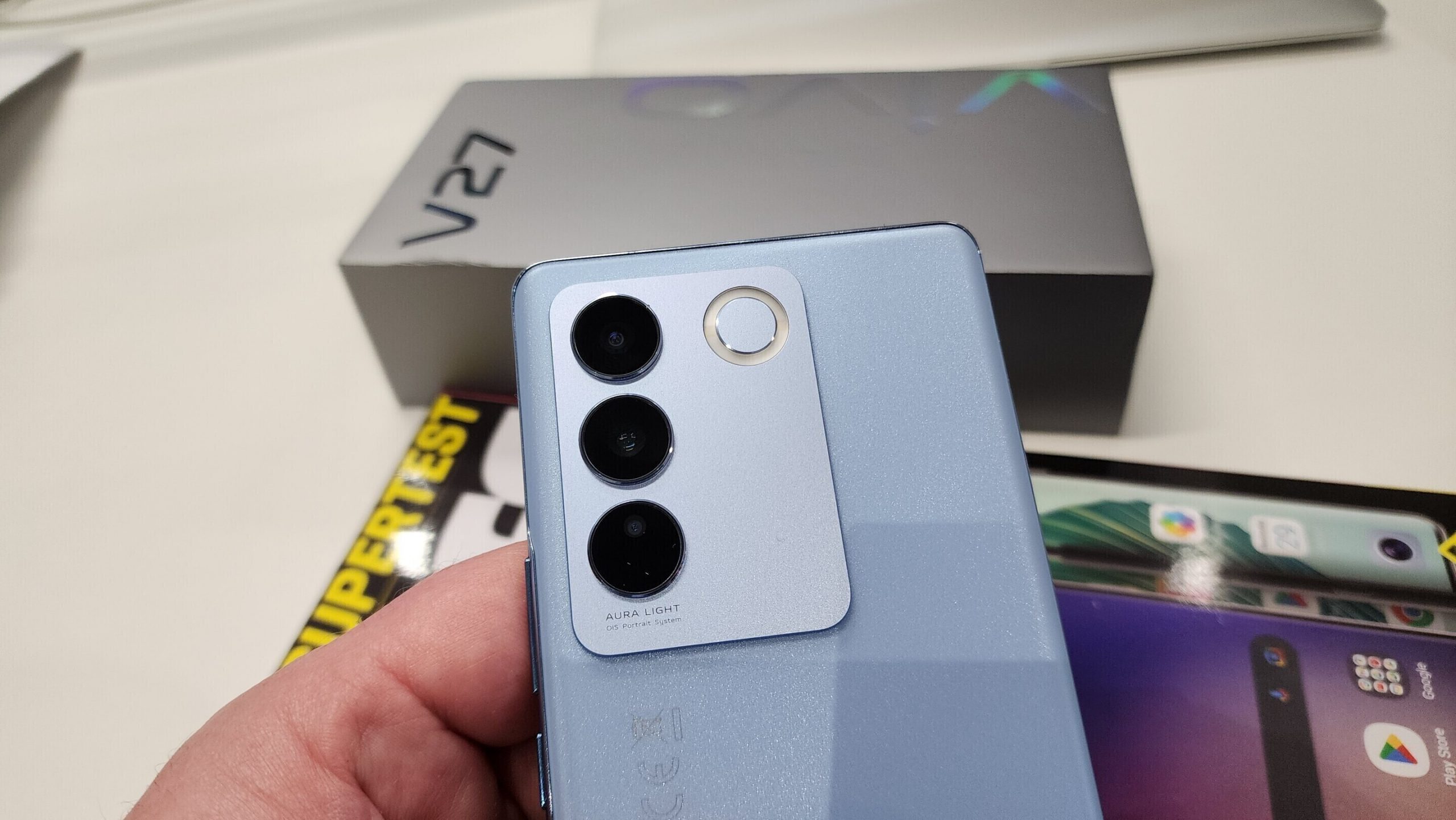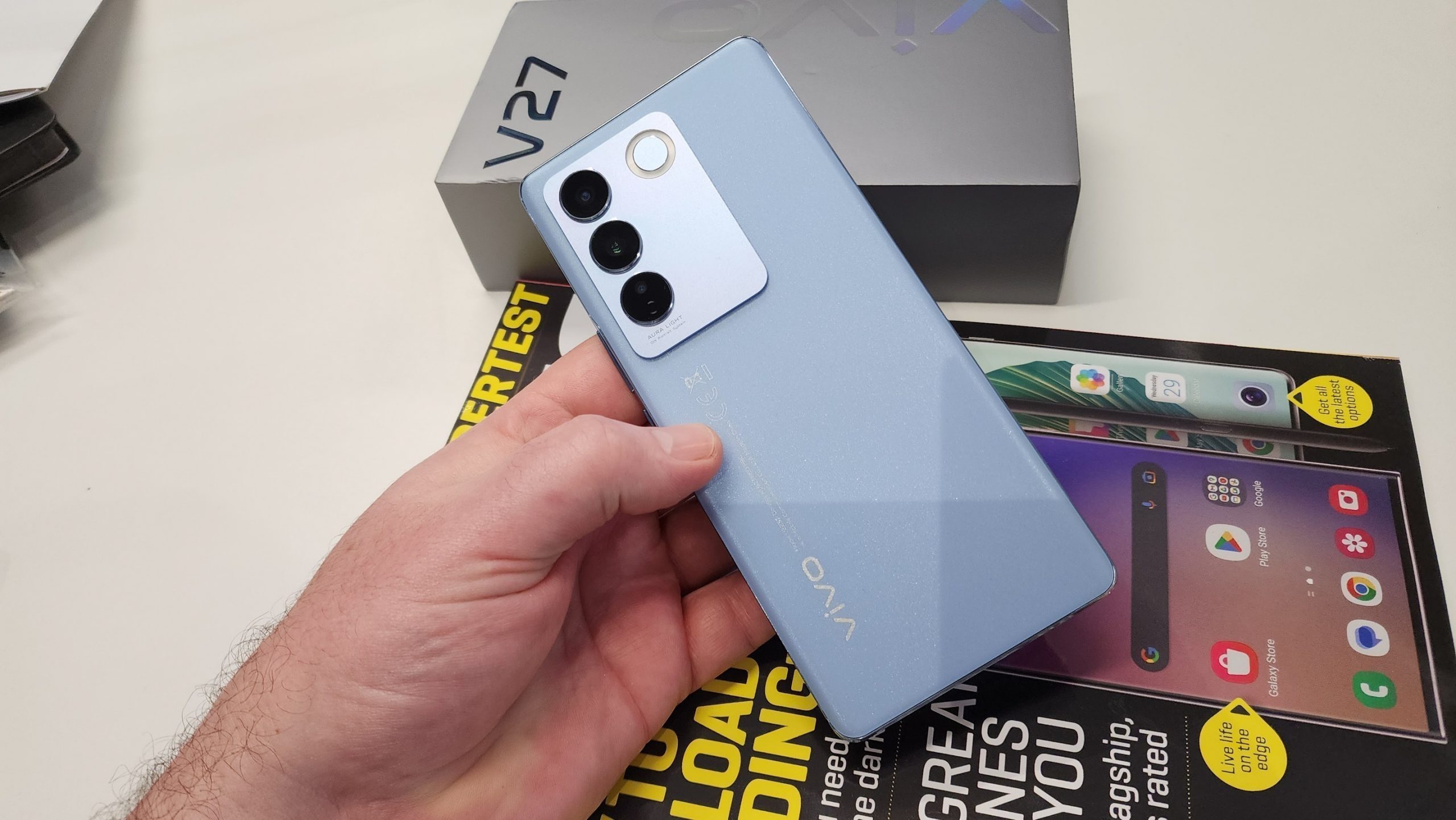There's a decent chance you might recognise the design this phone's packing. That's not actually a criticism. This one's a serious looker and the hardware under the pretty face is no slouch either. That said, you can do better across the board if you're willing to part more money. But that's always the case, isn't it?
-
Design
-
Performance
-
Battery
-
Camera
-
Price
If you’re after an attractive-yet-familiar-looking smartphone and you’re working on a very specific budget, then the Vivo V27 5G would appreciate it if you looked in its direction. This handset retails for R17,000, about R6,000 below your typical Samsung flagship. If you’re planning on venturing into Ultra territory, you probably have the R30,000 budget required to grab the Korean company’s headliner. In that case, you probably stopped reading this two sentences ago.
If you’re still here, you’re probably hoping to spend less than R20,000 on your handset. In that case, the Vivo V27 5G fits the bill. The Chinese brand has also done its level best to make the purchase seem as attractive as possible. That’s achieved by making this one of the best-looking smartphones we’ve ever seen from the company. However, as a relatively inexperienced competitor, there are a few missteps along the way.
A familiar face
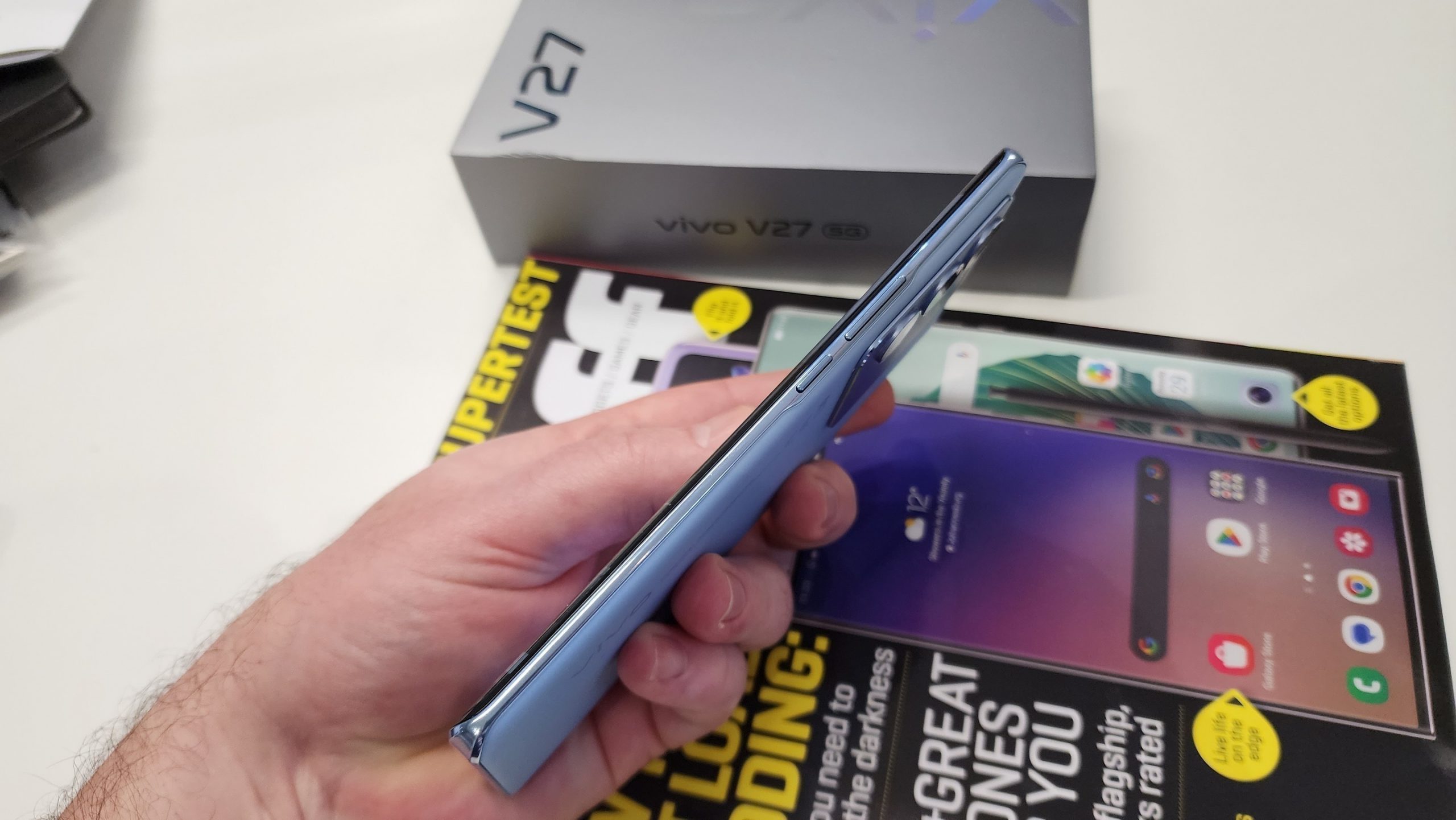
Vivo’s handset is an attractive one. That much is obvious right out of the box, even if its sleek lines are initially marred by a protective plastic sleeve and an informational sticker plastered over the rear panel. Peel all that away and you’ve got a sleek smartphone that curves from both front and back to meet the metal frame that acts as the V27’s circumference.
If you’ve been around smartphones for as long as Stuff has, you’ll recognise the design. Samsung used it for its high-end smartphones starting from around the Galaxy S6 right through to the Galaxy S9. There were several refinements over the years but it phased out in favour of the company’s current look. And since Samsung wasn’t using it anymore, Vivo felt justified in borrowing it. Which is fine, by the way. There are only so many ways to design a rectangular pocket-computer and this was one of the better ones. We’re glad it’s back.
While Vivo opts for a metal allow rear panel instead of Samsung’s dual glass effort, the V27 5G suffers from a similar problem to those older devices. The rear end, despite the large camera bump, is incredibly slippery. That means it feels great in the hand but you’ll immediately stuff it into the clear rubber case Vivo includes with the handset. Thus negating that lovely design right after it impresses the pants off you. Ah, well.
How fast is fast enough?

The Vivo V27 5G, as the name suggests, features 5G internet speeds if you happen to be within range of a compatible tower, but the rest of the internals are a little under true maximum performance. There’s a 6.78in AMOLED screen with all of the conventional features. 120Hz refresh rate, HDR10+ support, and a 1,080 x 2,400 resolution are great to have but Vivo’s basically just ticking boxes here. Everyone’s throwing these screens around.
Inside there’s a Dimensity 7200 chipset. Stuff‘s review model arrived with 8GB of RAM and 256GB of storage but there’s also a 128GB/8GB model out there and a 256GB/12GB version that you probably won’t ever see in person. The performance of this lot is as nippy as you’d like. There isn’t the extra headroom you’d get from a more expensive phone but those tend to be overpowered for day-to-day usage. If you’re just a regular person, partial to the occasional game, social media, photography, and messaging, with the odd phone call thrown in when you can’t avoid it, the Vivo V27 5G offers exactly enough performance.
The thermal design is actually pretty impressive, as it turns out. Sure, you can convince the back to warm up if you push it but the 4,600mAh battery is quite resistant to getting hot under the collar. That slightly smaller battery allocation is made up for with 66W fast charging, a tech that Vivo calls FlashCharge. But it’s the camera that Vivo wants you to be really wowed by.
50-50
Night photography is the one aspect of the Vivo V27 5G that Vivo will go to great lengths to tell you about. That’s fair enough. It uses three cameras on the rear — a 50MP Sony IMX766V sensor is the main lens and there’s an 8MP ultrawide and 2MP macro backup. It’s a far cry from the 200MP sensors some other brands are throwing around but the performance can’t really be argued with, especially with optical image stabilisation thrown in.
As ever, the best performance will turn up if you’ve got decent lighting but you’ll want to spend more money if you’re looking to take up low-light photography as a regular thing. It’ll brighten your setting and capture detail that you can’t see with the naked eye but pricier phones are capable of a better job. Night video is also decently rendered but, again, you’re getting what you pay for.
But perhaps you’d rather have a massive selfie camera. Vivo has chucked a huge 50MP sensor inside the V27’s AMOLED screen, which peers through the hole-punch at the top centre of the display. It’ll capture every blocked pore and out-of-place hair on your face but maybe you can reduce the image size for a prettier if less-detailed social media post. All the cool kids are doing it.
Vivo V27 5G verdict
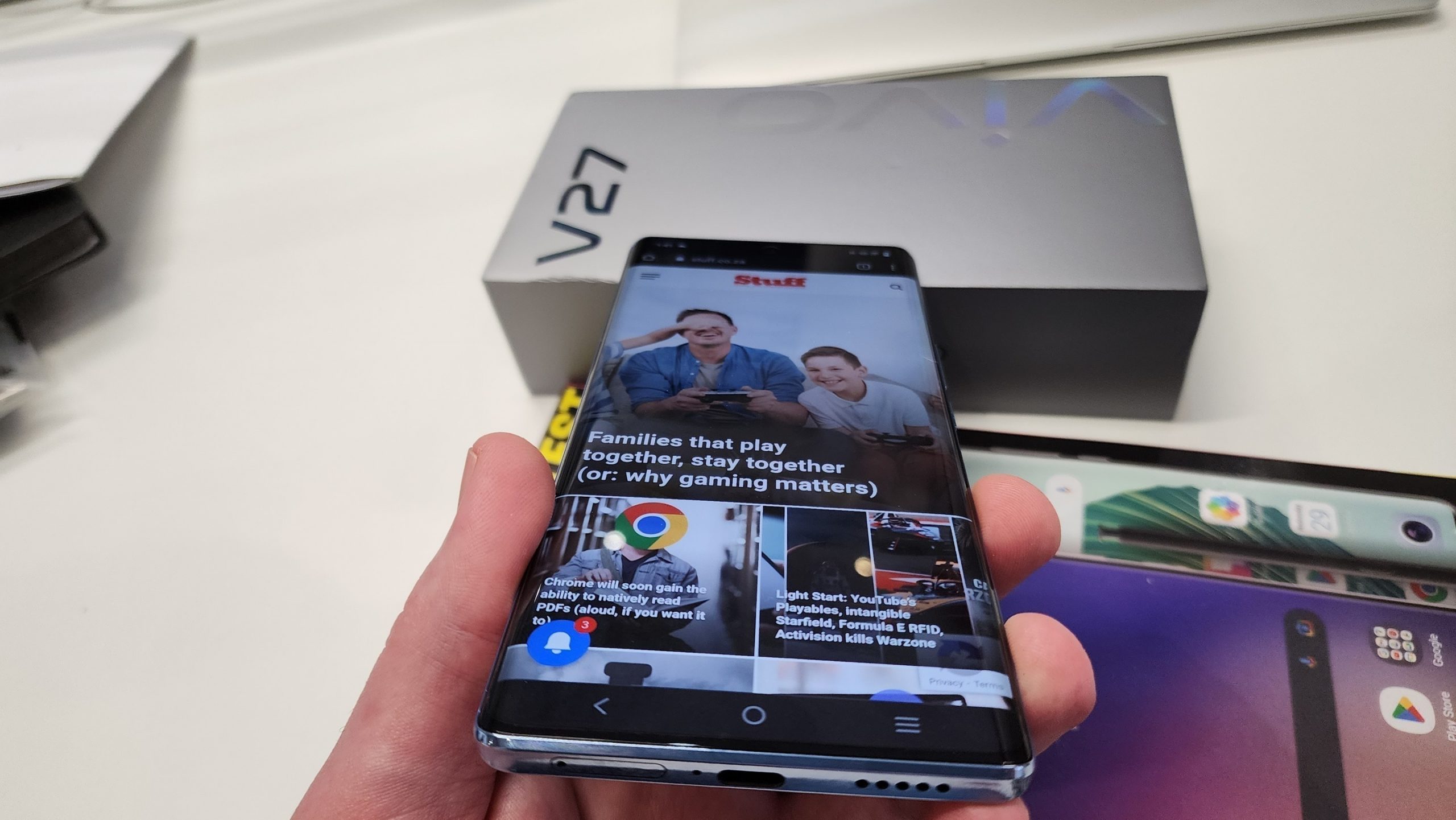
Vivo’s smartphones are steadily improving, to the point where they’re matching the best that Samsung and friends were putting out not so long ago. The brand has its own flair and is keeping up with the technological times (without racking up the megapixel count for no reason) but there are still a few aspects we’re less impressed with. The FuntouchOS 13 skin of Android 13 here remains hungry for user data, though it’s being less annoying in how it asks for it. We also reckon this price point is just a little too high for comfort. R17,000 is awfully close to R20,000, making it tempting to save for a little longer and jump up a price category. You won’t be annoyed if you choose to stay with the Vivo V27 5G, but we also wouldn’t blame you for asking ‘What if’ from time to time.


